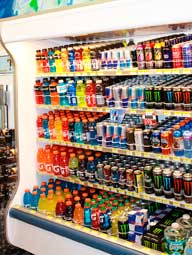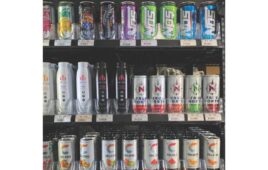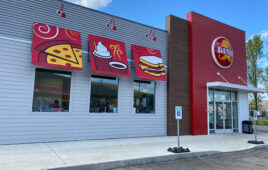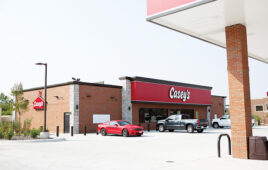Maybe it’s the unusually trying times we live in that have Americans reaching so often for beverages that bolster their energy levels. Regardless, it’s convenience store owners that are reaping the rewards.
Sales of energy drinks in c-stores topped $5.6 billion, up 14.29%, for the 52 weeks ended Dec. 26, 2010, according to SymphonyIRI Group data. Red Bull, Monster, Rockstar, Java and AMP led the way. For retailers, that means the need for pipeline efficiencies.

Energy drinks are expected to experience solid growth in 2011 thanks to increased consumer demand for an energy boost.
Energy drinks as a category rebounded in 2010. “Basically, what we’ve seen overall is an improved market for beverages in 2010 in comparison to market performance in 2008 and 2009,” said Gary Hemphill, managing director of Beverage Marketing Corp. in New York City. “We saw across-the-board improvement. Virtually every category did better in 2010 than it did in 2009. And, in fact, in 2009, really due to the economy, most categories actually declined in volume, and refreshment beverages were no exception.”
Having said that, energy drinks were actually flat in 2009—which may sound bad, but in comparison to some of the other beverage categories this was a relatively favorable result.
Although Hemphill had only preliminary numbers at presstime, the category appears to have gone up by about 5% in volume.
“The category had been growing by double digits if you go back five years ago or more, but it was much smaller then,” Hemphill said. “Today it’s grown to a certain threshold, nearly 400-million gallons. It’s not as big as a lot of other cold vault categories, but if you look at it on a dollar basis it’s fairly substantial because of the price points of the products. And convenience stores are the biggest channel for energy drinks.”
Strong Outlook
Nor is the category showing any signs of a reversal of fortunes. “We believe that the energy-need state is quite large, and so the category is likely to continue to have solid growth in 2011 and probably beyond,” Hemphill said.
In order to maximize sales, retailers are advised to focus on doing the basics, Hemphill suggested. “By that I mean having a couple of brands offered and making sure they are always in stock,” he said. “The leading brands are Red Bull, Monster and Rockstar. There are a lot of brands in the marketplace but those three have the largest volume marketshare at this point.”
Also crucial is merchandising them well in the store. “They are certainly an impulse purchase item and appeal to an impulse type of customer, which is great for c-stores,” Hemphill said.
Merchandising them cold, and if possible in multiple places, are equally important.
“Remember that energy drinks are extremely profitable because people are willing to pay more for getting a functional benefit, which in this case is energy, from the product,” Hemphill said. “Retailers should use that to their advantage by keeping the products in front of customers. In other words, just executing the basics will go miles in terms of improving performance in c-stores in 2011.”
Are Energy Drinks Losing Energy?
Mintel’s Global Market Navigator (GMN) found that Americans consume 3.05 liters of energy drinks per capita each year, but energy drink market penetration remained flat with15% of all adults aged 18 and older consuming the drinks from 2007 to 2009. Energy drinks/shots non-users cited high prices (48%), too much caffeine (43%) and a general feeling that energy drinks/shots just aren’t good for you (43%) as reasons why they have not consumed any in the past three months. Other notable takeaways include:
74% of consumers said they don’t consume energy drinks/shots.
69% of these non-users said they are not interested in trying energy drinks/shots.
1 million new energy drinks users during 2007-2009 were 18 and older.
93 million new energy drinks users during 2005-2007 were 18 and older.
—SOURCE: Mintel International




